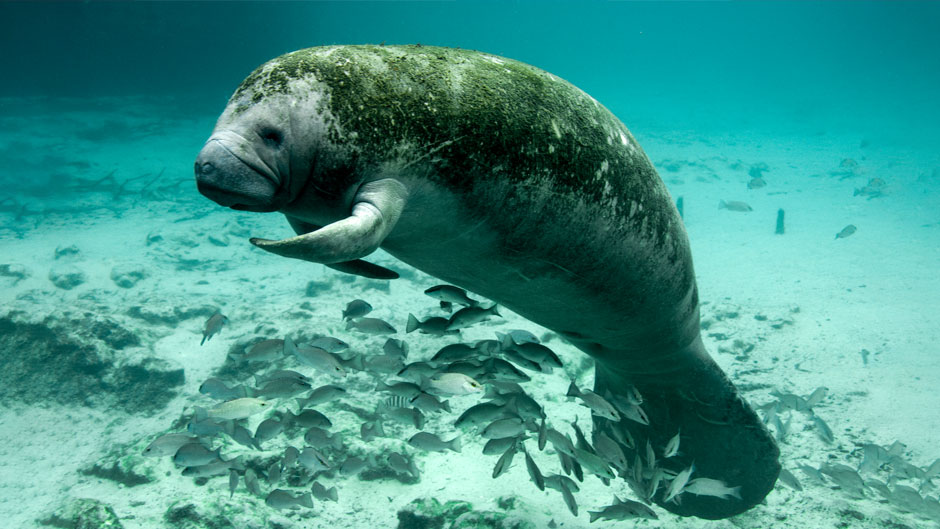Nearly a half century after its enactment, the federal Endangered Species Act (ESA) is credited with protecting more than 1,700 species of imperiled plants and animals across the United States, preventing the likely extinction of nearly 300 of them—including the bald eagle and Florida manatee.
Yet the law signed by President Richard Nixon in late 1973 has never lacked controversy nor critics primarily because, as University of Miami graduate student Caitlin C. Mothes notes, when species are protected so, too, are their habitats. Now with President Donald Trump championing government deregulation, initiatives aimed at weakening or dismantling the ESA abound. This has prompted Mothes and three fellow Ph.D. candidates in the Department of Biology to try to answer the question: What would happen if the ESA were repealed and the protection of imperiled species fell to individual states?

Their answer, recently published in Conservation Letters, a journal of the Society for Conservation Biology, is not reassuring. Under the worst-case scenario, the researchers found that 73 percent of species on the federal list, or more than 1,000 plants and animals, could lose all protection were the ESA repealed. That’s because 68 percent of all imperiled species in the United States are not protected across larger habitats by individual state laws. What’s more, nearly every state—94 percent—protects less than half of the imperiled species within its borders, and 20 states do not protect a single plant.
“Neither the ESA nor state laws are perfect, but without the ESA a lot more species would be in greater peril, and that really includes humans, too,” said Mothes, the study’s lead author. “Think about healthy mangroves in Florida. They protect us from hurricane damage. So, if we want to protect biodiversity, which offers a lot of ecosystem services that human life depends on, what we really need in addition to a stronger ESA, are increased state protections.”
For their analysis, Mothes and her colleagues in assistant professor Christopher Searcy’s Conservation Ecology Lab conducted the first quantitative review of which species are protected by state laws. Then, following that painstaking process, they matched each state’s protections against the protected species listed by the ESA—arguably the world’s strongest biodiversity protection law—and the International Union for Conservation of Nature’s (IUCN) Red List of Threatened Species, the most comprehensive inventory of the global conservation status of biological species.
“All of the co-authors were my lab mates, so it was all hands-on deck,” said Mothes, who specializes in data analysis and ecological modeling. In addition to Mothes and Searcy, the senior author, other co-authors included Ph.D. candidates Leyna R. Stemle, Stephanie L. Clements, and Hunter J. Howell, and undergraduate assistant Theresa N. Fonseca.
“There is no standard system for listing species, so to get all the data we had to do a lot of manual searching,” Mothes explained. “We looked at every state’s imperiled species act—if they had them—and we dug into state codes and legislative rules to get an idea of which species and categories were protected by each state law, and also recorded if, by definition, species on the federal list were automatically included on that state list. For example, Florida protects both endangered and threatened species on the federal list, but not all states do.”
In fact, according to the group’s analysis, Florida stacks up well compared to other states. Although the Sunshine State protects only 30 percent of the imperiled species on the IUCN Red List, it protects 93 percent of the species on the ESA list. Altogether, Florida lists 665 imperiled species, second only to New York’s 801 species. Like New York, most of Florida’s protected species, 559 of them, are plants—which 20 states do not protect at all.
Although such detailed state-specific data is not included in the study itself, it is included in seven interactive maps that Mothes created to visualize the state-by-state findings. Visitors to her project’s site can hover over any one of the 50 states to see the number of species protected under its laws, how many of them are plants or animals, their total number of imperiled IUCN- and ESA-listed species, and the percent of each protected by state law.
In addition to compiling the three imperiled species data sets, the researchers factored in a number of other predictive variables for species protection, including each state’s population density, per capita income, percentage of land devoted to agriculture, and state political party affiliation. Mirroring the nation’s political divide, they found that rural, Republican-leaning states protected significantly fewer species, particularly plants, than more urban and populous Democratic-leaning states.
Since most states automatically include some ESA species on their own list, the researchers acknowledged that their key finding—that, absent the ESA, 73 percent of ESA-protected species would be at risk—is a worst-case scenario. After all, they noted, many state legislatures likely would amend their acts to keep these species on their state lists.
“But there is no guarantee that state governments would make this decision. Further, amendments to state acts would likely take time, and imperiled species might experience losses during the interim,” the researchers concluded. “Overall, state acts are highly inconsistent, and without a consistent federal imperiled species law, biodiversity conservation and recovery would vary drastically across the country.”

